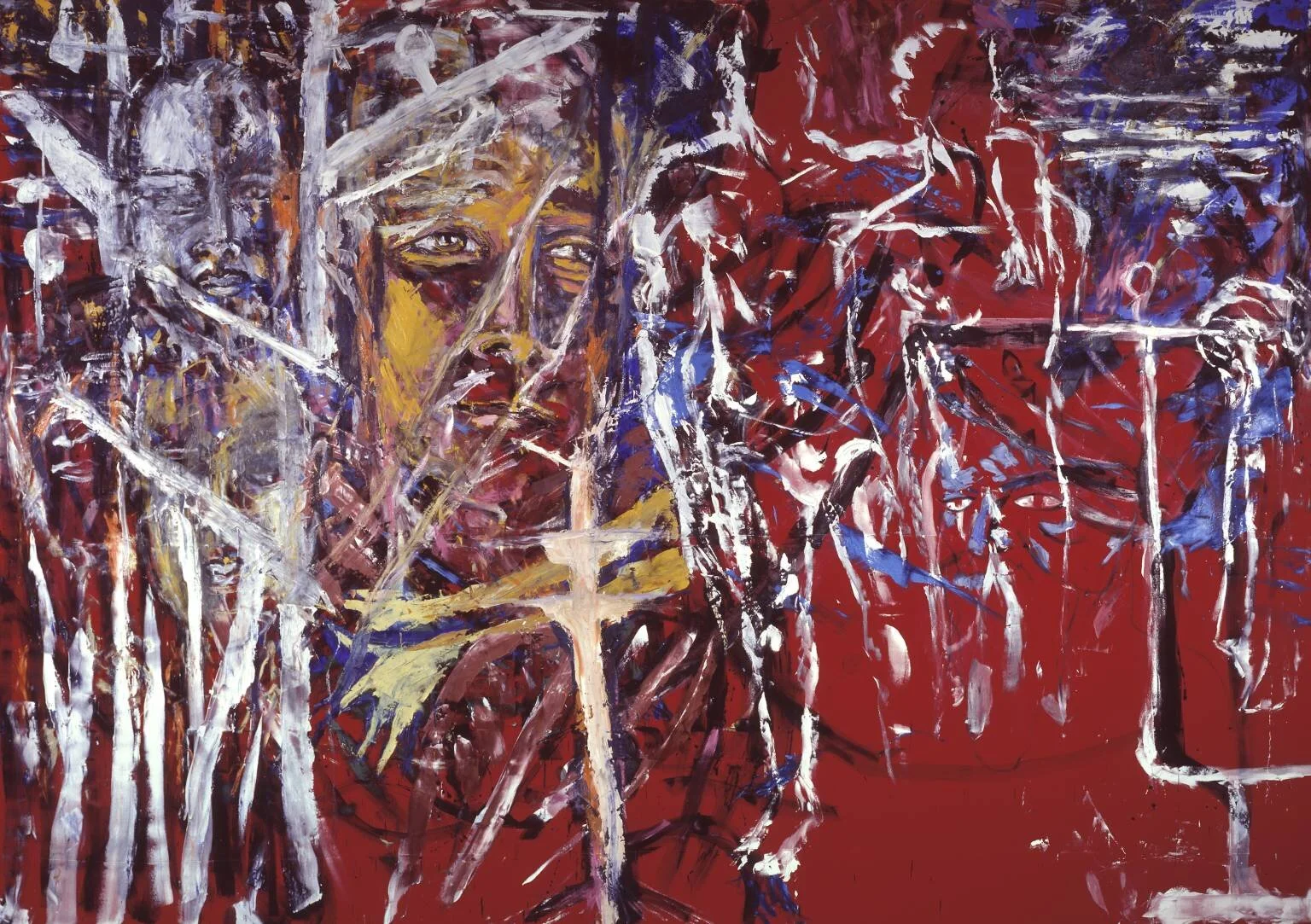
Julian Schnabel
b. 1951 in New York City, NY, USA
Lives and works in New York City, NY, USA
Julian Schnabel is one of the most important living artists of today. Acclaimed since the beginning of his career in the 1980s, his works can be found in the leading art museums of the world, including the MoMA in New York, the Tate in London and the Pompidou Centre in Paris, which held a solo exhibition of his work in 1987. He is also a leading film director, making films such as Basquiat (1996), Before Night Falls (2000, Grand Jury Prize at the Venice Film Festival) and The Diving Bell and the Butterfly (2007 Golden Globe for Best Foreign Language Film, Golden Globe for Best Director and Best Director at the Cannes Film Festival).
Julian Schnabel is known for monumental scale, both in the physical aggression of his materials and the historical reach of his themes. Schnabel rose to stardom quickly in the early 1980s and was often photographed and recorded painting in exotic environments on canvases so large they defied any sense of restraint. He often used sails or industrial tarps for painting surfaces, sometimes employing paint-soaked tablecloths to make tremendously large strokes across his images. He came to the notice of the art world as if fully formed, happy to don the role of standard bearer for 1980s excess and the return of an expressionistic swagger to painting that invoked the world of Jackson Pollock, Willem de Kooning, and Franz Kline.
At the heart of Schnabel’s aesthetic, however, is the long history of European painting, often seen through the filter of religious imagery and veneration. Schnabel’s portraits have the bearing and gravity of altarpieces or the mosaic celestial scenes that loom above churchgoers. His approach to devotional imagery is less polished than the refined traditions of Europe; rather, Schnabel’s methods are more physical and reminiscent of folk art. Some attribute the artist’s rough-hewn physicality to time spent in Mexico, moving to the bordertown of Brownsville, Texas, with his parents at the age of 13 and returning often as an adult.
Schnabel’s most famous series employs hundreds of broken plates, taking the mosaic to an exaggerated level. The images in the work are pulverized and shattered by the material’s very nature. The epic size of The Walk Home, 1985, is integral to understanding its elusive vision of large black forms descending upon a dense forest. The work could be a scene from Dante or a medieval tapestry, such is the immensity of the myth that Schnabel conveys.
Although Schnabel has dedicated his life to painting, never breaking from the day to day rigor of its development and extension, his career has expanded into film, architecture, and interior design. His cinematic talents have been highly praised in films such as Basquiat, Miral, and The Diving Bell and the Butterfly. The latter earned best director awards at the 2007 Cannes Film Festival and the Golden Globes, and his design collaboration with Ian Schrager on New York City’s Gramercy Park Hotel has been noted for its sophistication and beauty.
Schnabel’s mythic, often controversial career is rooted in his ability to morph and change using a vast alchemy of sources and materials composed and distributed across surface and support in defiance of the very notions of moderation, rationality, and order. His baroque attitude is embodied in audaciously scaled paintings that, over the course of time, have combined oil painting and collage techniques; classical pictorial elements inspired by historical art and neo-expressionist features; abstraction and figuration. Tackling appropriately expansive themes such as sexuality, obsession, suffering, redemption, death, and belief, he has employed a diversity of found materials including broken plates, diverse textiles such as Kabuki theater backdrops, tarpaulins, and velvet; a plethora of images, names, and fragments of language; as well as thickly applied paint, viscous resin, and digital reproduction.









